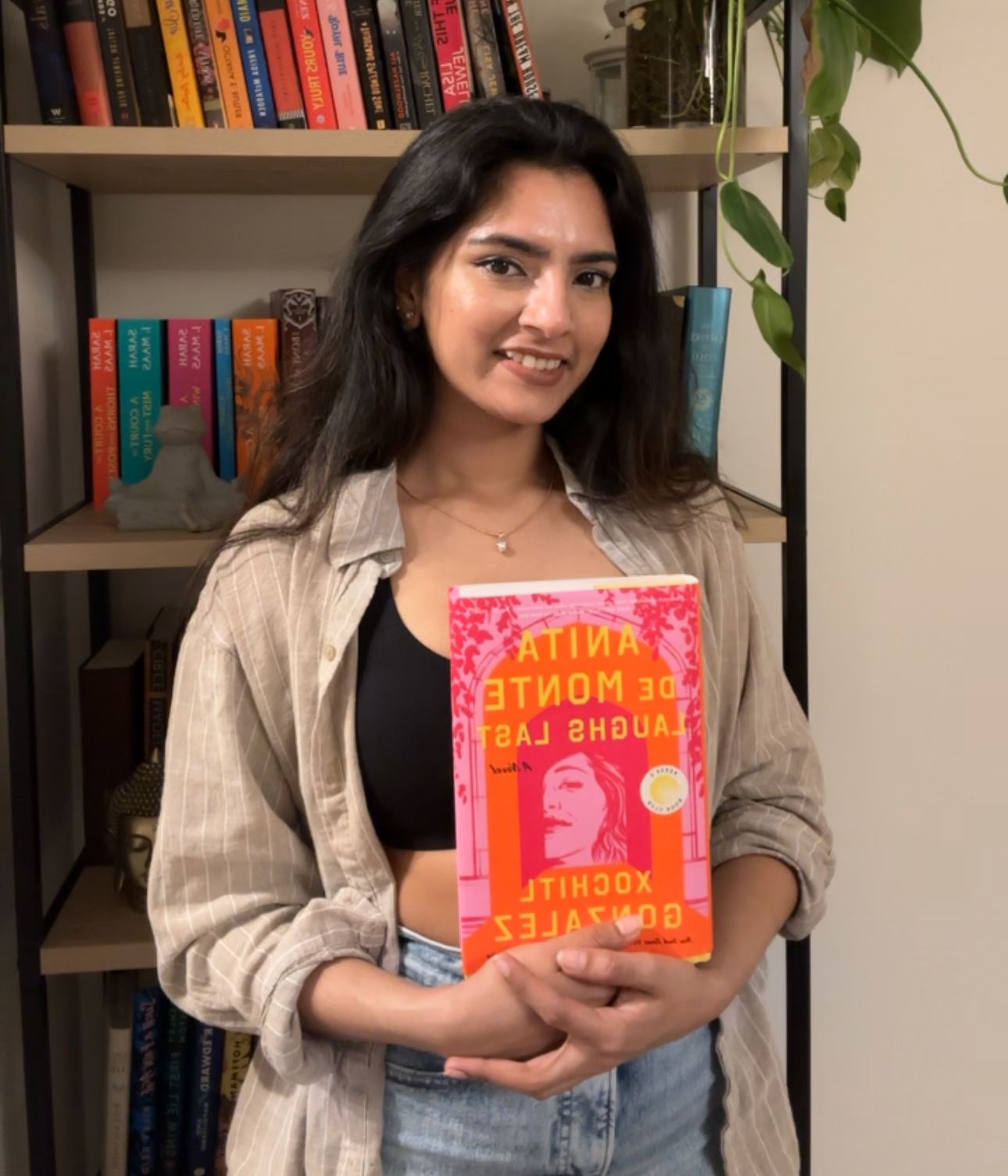The book, loosely crafted around the life and mysterious death of cuban artist Ana Mandietta, follows the perspectives of two women: Anita de Monte, a talented artist on the rise who marries Jack Martin, a highly acclaimed figure in the art world known for his minimalist work. Despite facing skepticism from her husband and others in the art community, Anita is willful, unapologetic, and a force of nature. Much of her art is influenced by her childhood and her connection to her homeland. On the other hand, there’s Raquel Toro, a young woman from Brooklyn in her final year at Brown University, embarking on a summer internship at the RISD museum. As an art history student in this prestigious institution, she grapples with her identity amidst a predominantly white crowd. Raquel falls for a rich white senior, further struggling to fit into a mold of his liking, dictated by western ideas of beauty and culture.
The prose in this book is a delight to read. Gonzalez’s words carry a smart and shrewd humor that intrigues the reader. Despite my lack of familiarity with the art world, I found myself engrossed in the narrative, unable to anticipate what turn it would take. The author’s passion for art history and her personal experiences as a student at Brown are skillfully interwoven with Raquel’s perspective, adding depth and authenticity to the narrative. What pleasantly surprised me was Gonzalez’s decision to continue Anita’s POV beyond her death, cleverly portraying her raw anger and seething frustration at the injustice she was being subjected to.
This book is ambitious and tries to tackle a lot of crucial topics at once. Its primary focus, however, lies in shedding light on the pervasive influence of white dominance within the art world, much like in many other industries. The book explores the idea that racism operates in an almost domino fashion. Particularly within the art industry, the work of white male artists often receives significant acclaim, despite the presence of numerous equally talented artists from diverse backgrounds who struggle to attain similar recognition. Years later, white men, now occupying the roles of academic professors and museum curators, continue to dominate the discourse surrounding these artists, perpetuating obstacles for people of color.
The books also addresses the complex dynamics of dysfunctional relationships. How men seek dominance over their partners and women, even as they are aware of the toxicity, keep going back for the feeling of belongingness and of being needed, inadvertently bolstering the male ego. In exploring the relationships between the two women and their respective partners, the author highlights the abuse that sometimes arises from men’s insecurities and their tendency to be drawn to women they perceive as inferior.
Despite its ambitious scope, the book falls short in its execution. While it presents two strong points of view, it struggles to effectively intertwine them. The narrative veers off course in the middle, overly focusing on the relationship dynamics of the main characters, which detracts from a more satisfying convergence of Raquel and Anita’s stories. Another aspect I didn’t enjoy were the excessive supernatural elements in the book. While the author adeptly captures the emotions of a dead artist, some aspects felt unnecessary—particularly, Anita taking the form of a bat.
Gonzalez emphasizes the significance of young women finding and asserting their voices, despite the adversities they are presented with. As a brown woman navigating life on a work visa and striving to carve out her space in this country, this book deeply resonated with me. For that, and for introducing me to an industry I knew next to nothing about, I’m rating this book a 4/5.
